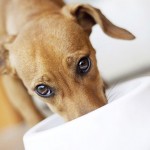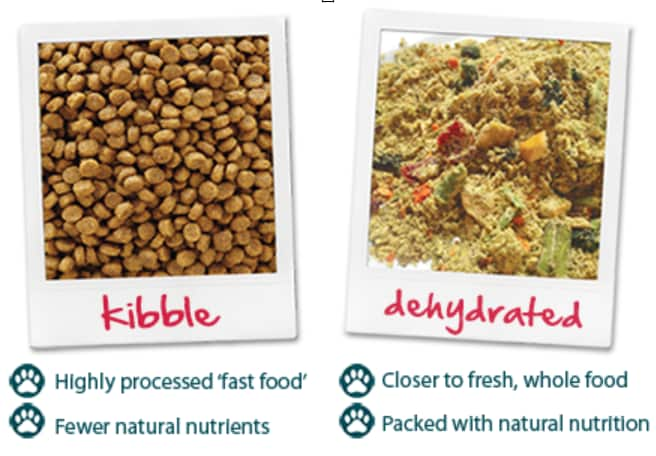 What to feed a pet with cancer is a question capable of producing a variety of answers depending on the perspective of the person answering the query andone’s training and experience—even amongst veterinarians.
Since my dog Cardiff has endured four bouts of Immune Mediated Hemolytic Anemia(IMHA) and two occurrences of T-Cell Lymphoma in his ten years of life, I’ve had to delve into the feeding options that will not only nourish his tissues but also permit him to tolerate medications used to help control his ailments.
In this multi-part series, I’m going to share some perspective on feeding pets that I’ve learned from my years of veterinary practice, continuing education, and from my personal experience managing diseases that are typically fatal in my own pet.
What to feed a pet with cancer is a question capable of producing a variety of answers depending on the perspective of the person answering the query andone’s training and experience—even amongst veterinarians.
Since my dog Cardiff has endured four bouts of Immune Mediated Hemolytic Anemia(IMHA) and two occurrences of T-Cell Lymphoma in his ten years of life, I’ve had to delve into the feeding options that will not only nourish his tissues but also permit him to tolerate medications used to help control his ailments.
In this multi-part series, I’m going to share some perspective on feeding pets that I’ve learned from my years of veterinary practice, continuing education, and from my personal experience managing diseases that are typically fatal in my own pet.
Human-Grade Versus Feed-Grade Pet Foods
 You may not realize it, but you may be feeding your pet meals and treats made with ingredients that have been deemed unfit for human consumption.
The majority of commercially available pet diets and treats are formulated with ingredients that are considered feed-grade instead of human-grade. Unfortunately for our pets, feed-grade ingredients have the potential to cause a variety of ailments on both short and long-term bases.
Feed-grade ingredients are lower quality than their human-grade counterparts and have higher allowable levels of a variety of toxins, including mold-based mycotoxin. Additionally, feed-grade ingredients are more likely to contain bacteria, viruses, parasites, and chemical agents that can sicken your canine or feline companion.
You may not realize it, but you may be feeding your pet meals and treats made with ingredients that have been deemed unfit for human consumption.
The majority of commercially available pet diets and treats are formulated with ingredients that are considered feed-grade instead of human-grade. Unfortunately for our pets, feed-grade ingredients have the potential to cause a variety of ailments on both short and long-term bases.
Feed-grade ingredients are lower quality than their human-grade counterparts and have higher allowable levels of a variety of toxins, including mold-based mycotoxin. Additionally, feed-grade ingredients are more likely to contain bacteria, viruses, parasites, and chemical agents that can sicken your canine or feline companion.
What are Mycotoxins?
Mycotoxins are produced by mold. Mold is another term for a fungal organism or fungi. Fungi also include mushrooms, yeast, and Dermatophytes (Ringworm). Fungi aren’t inherently bad, but they can cause serious toxicity in the body when consumed or when they enter through other orifices (nose, mouth, skin, etc.). Mycotoxins, including aflatoxin, vomitoxin, and others, damage the liver, kidneys, and digestive tract, and weaken the immune system. Mycotoxins are also carcinogenic (cancer-causing), which should get owners thinking about the role pet foods and treats containing feed-grade ingredients may have contributed in the development of their pet’s cancer. Moldy grains are the primary source of mycoxotins in pet foods and treats, but proteins and fats also foster mold growth. Mold thrives when the appropriate environmental conditions of moisture, darkness, and warmth occur. Your pet’s dry or canned food can harbor mycotoxins, or mycotoxins can be produced by mold that flourishes in the bowl, trashcan, soil, or other household locations. Since grains are often the culprit for mycotoxin contamination of pet foods, I feel the movement for commercially available foods to be grain-free is a good thing. I’m not against pets eating human-grade, whole grains as part of their diets, as long as they don’t make up the majority of a meal’s portion and as long as the type of grains are rotated. Can My Pet’s Food Be Contaminated by Waste Products and Chemicals? Yes, your pet’s food or treats can contain waste products from other animals or insects and various chemicals. According to FDA Compliance Policy CPG Sec. 675.100: Diversion of Contaminated Food for Animal Use, the FDA “does not object to the diversion to animal feed of human food adulterated with rodent, roach, or bird excreta.” Excreta includes feces and urine, which can contain a variety of harmful components like pathogenic (harmful) bacteria (Salmonella, Listeria, and E. coli), parasites, viruses, or other noxious substances. The pet eating the contaminated food isn’t the only one in the household at risk. Other pets or humans in the house can also be affected by components of animal and insect excreta, especially pathogenic bacteria like Salmonella. Juvenile, geriatric, and sick pets and people are most at risk of suffering toxic reactions to pathogenic organisms. Additionally, CPG Sec. 675.200: Diversion of Adulterated Food to Acceptable Animal Feed Use, states that the Center for Veterinary Medicine, HFV-230, “will consider the requests for diversion of food considered adulterated for human use in all situations where the diverted food will be acceptable for its intended animal food use. Such situations may include: a. Pesticide contamination in excess of the permitted tolerance or action level. b. Pesticide contamination where the pesticide involved is unapproved for use on a food or feed commodity. c. Contamination by industrial chemicals. d. Contamination by natural toxicants. e. Contamination by filth. f. Microbiological contamination. g. Over tolerance or unpermitted drug residues." Filth is one of my favorite terms for the all encompassing image it lends to any substances it is describing. Yet, I certainly don’t want Cardiff’s or my patients’ foods or treats containing filth of any kind. Both raw and cooked foods can contain pathogenic bacteria, mycotoxins, and other harmful substances, so I recommend that owners frequently reference the FDA’s Recalls & Withdrawals page to see if their pet’s food or treats has been recalled and why. Susan Thixton’s Truth About Pet Food is another great resource for recalls and sometimes yields shocking information about the pet food industry. Sign up for e-mail delivery of Thixton’s blog to have important notifications delivered directly to your inbox. Are Human-Grade Foods Regulated Differently from Feed-Grade Foods? The Association of American Feed Control Officials (AAFCO) and the Food and Drug Administration (FDA) claim that a product is "human-grade" or "human-quality" if the product is technically "edible" for people, in legally defined terms.
Human-grade pet food must be produced under 21 CFR 110 Good Manufacturing Practices and must also be manufactured, packed, transported and held in accordance with federal regulations for human food.
“Regular” pet food is classified as “feed-grade,” which has been deemed unfit for human consumption as a result of the ingredients it contains, or because of the facility or manner in which it has been produced.
Even if a pet food company uses some human-grade ingredients, the company cannot legally call itself a human-grade pet food brand if their product isn’t made in a human food production facility.
Few companies actually use human-grade ingredients in their pet foods and treats, and being able to state so on the label requires extremely strict production quality control standards.
Home-prepared foods will almost certainly have human-grade ingredients, as I can’t fathom how an owner would be able to source feed-grade ingredients to then prepare in their own home for their cat or dog’s meals.
Cardiff eats Honest Kitchen foods and treats as part of his daily caloric intake. He also eats Lucky Dog Cuisine and snacks of cooked meats, cooked and fresh vegetables, and fresh fruits that I prepare for myself and my spouse. In the interest of full disclosure, Lucky Dog Cuisine did not compensate me to write this article.
It’s crucial that owners scrutinize the ingredients in pet foods and treats and choose human-grade over feed-grade. This perspective should be applied to all life stages in order to help prevent toxicity and disease from occurring instead of only deciding to feed a pet a human-grade diet once a serious disease like cancer has been diagnosed.
The Association of American Feed Control Officials (AAFCO) and the Food and Drug Administration (FDA) claim that a product is "human-grade" or "human-quality" if the product is technically "edible" for people, in legally defined terms.
Human-grade pet food must be produced under 21 CFR 110 Good Manufacturing Practices and must also be manufactured, packed, transported and held in accordance with federal regulations for human food.
“Regular” pet food is classified as “feed-grade,” which has been deemed unfit for human consumption as a result of the ingredients it contains, or because of the facility or manner in which it has been produced.
Even if a pet food company uses some human-grade ingredients, the company cannot legally call itself a human-grade pet food brand if their product isn’t made in a human food production facility.
Few companies actually use human-grade ingredients in their pet foods and treats, and being able to state so on the label requires extremely strict production quality control standards.
Home-prepared foods will almost certainly have human-grade ingredients, as I can’t fathom how an owner would be able to source feed-grade ingredients to then prepare in their own home for their cat or dog’s meals.
Cardiff eats Honest Kitchen foods and treats as part of his daily caloric intake. He also eats Lucky Dog Cuisine and snacks of cooked meats, cooked and fresh vegetables, and fresh fruits that I prepare for myself and my spouse. In the interest of full disclosure, Lucky Dog Cuisine did not compensate me to write this article.
It’s crucial that owners scrutinize the ingredients in pet foods and treats and choose human-grade over feed-grade. This perspective should be applied to all life stages in order to help prevent toxicity and disease from occurring instead of only deciding to feed a pet a human-grade diet once a serious disease like cancer has been diagnosed.
 Dr. Patrick Mahaney
Thank you for reading this article. Your questions and comments are completely welcome.
Please feel free to communicate with me through Twitter (@PatrickMahaney) and follow my adventures in veterinary medicine by liking Patrick Mahaney: Veterinarian Acupuncture Pain Management for Your Pets on Facebook.
Copyright of this article (2016) is owned by Dr Patrick Mahaney, Veterinarian and Certified Veterinary Acupuncturist. Republishing any portion of this article must first be authorized by Dr Patrick Mahaney. Requests for republishing must be approved by Dr Patrick Mahaney and received in written format.
Dr. Patrick Mahaney
Thank you for reading this article. Your questions and comments are completely welcome.
Please feel free to communicate with me through Twitter (@PatrickMahaney) and follow my adventures in veterinary medicine by liking Patrick Mahaney: Veterinarian Acupuncture Pain Management for Your Pets on Facebook.
Copyright of this article (2016) is owned by Dr Patrick Mahaney, Veterinarian and Certified Veterinary Acupuncturist. Republishing any portion of this article must first be authorized by Dr Patrick Mahaney. Requests for republishing must be approved by Dr Patrick Mahaney and received in written format.